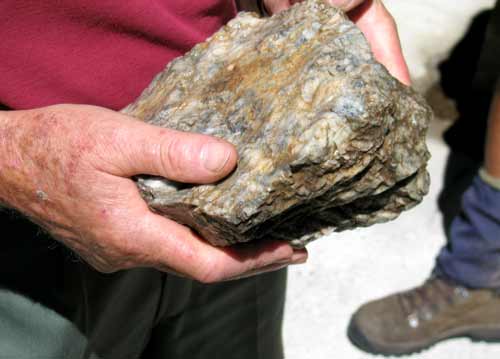Logantown Gold (Central Otago) EarthCache
Logantown Gold (Central Otago)
-
Difficulty:
-

-
Terrain:
-

Size:  (not chosen)
(not chosen)
Please note Use of geocaching.com services is subject to the terms and conditions
in our disclaimer.
Gold deposits are formed via a very wide variety of geological
processes. Deposits are classified as primary, alluvial or placer
deposits, or residual or laterite deposits. Often a deposit will
contain a mixture of all three types of ore.
Deposition
Plate tectonics is the underlying mechanism for generating gold
deposits. The majority of primary gold deposits fall into two main
categories: lode gold deposits or intrusion-related deposits.
Lode-gold deposits are intimately associated with orogeny and other
plate collision events within geologic history. Most lode gold
deposits sourced from metamorphic rocks because it is thought
thatthe majority are formed by dehydration of basalt during
metamorphism.
A popular misconception is that natural gold has cooled from a
molten state. In fact, gold is transported though the Earth’s
crust dissolved in warm to hot salty water. These fluids are
generated in huge volumes deep in the Earth’s crust as
water-bearing minerals dehydrate during metamorphism. Any gold
present in the rocks being heated and squeezed is sweated out and
goes into solution as complex ions. In this form, dissolved gold,
along with other elements such as silicon, iron and sulphur,
migrates wherever fractures in the rocks allow the fluids to pass.
This direction is generally upwards, to cooler regions at lower
pressures nearer the Earth’s surface.
Under these conditions, the gold eventually becomes insoluble and
begins to crystallise, most often enveloped by masses of white
silicon dioxide, known as quartz. This association of gold and
quartz forms one of the most common types of "primary gold
deposits".
An example of Gold in Quartz:

Extraction
There are two main ways of obtaining the gold from the quartz
veins. Placer mining and hard rock mining. A placer gold deposit
occurs when a quartz vein is exposed to weathering. The rock
surrounding the quartz is eroded and washed away by hydraulic
processes. The quartz can then be broken down by the same
processes, which frees the gold from the quartz matrix.
The other way to obtain the gold is through hard-rock mining.
Miners locate the quartz veins by sample core drilling and then
tunneling to the quartz vein and begin removing it so that it can
be processed at the surface and the gold removed. The processing
consists of physical and chemical means of extraction.
Logan's Reef is an example of hard-rock mining.
Sources:
Gold Formation
Ore
Genesis
Te
Ara NZ
To log this Earthcache you must answer the following
questions:
(1) Briefly describe how a battery works to helps in the process to
retrieve the gold.
(2) Calculate in square-meters the size of mine shaft opening at
the listed coordinates.
(3) What depth does the No. 2 shaft run to?
(4) Proceed to S44° 56.249 E169° 22.043 where you will see a large
mullock heap which are the tailings left over from the process of
mining. Use the altimeter on your GPSr (or a good old educated
guess) and calculate the height of the pile from the downhill
side.
(5) Optional, include in your log a picutre of you and your GPSr
from one of the two waypoints.
Caution:
There are old and very deep mining shafts throughout this area.
Extreme care must be taken; children must be closely supervised.
Please stick to the provided tracks.
Additional Hints
(No hints available.)